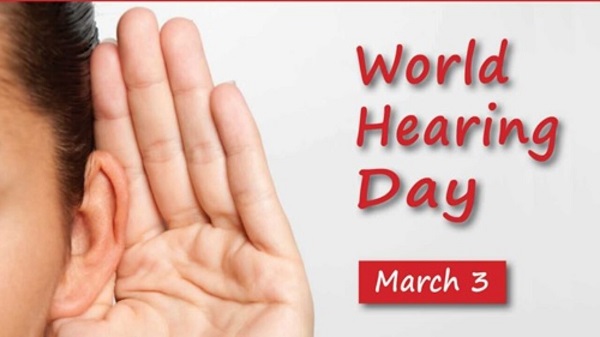
As the world marks the 2022 World Hearing Day (WHD) today (March 3), the World Health Organization (WHO) has released new standards to tackle rising threats of hearing loss.
The document launched yesterday ahead of the WHD, themed “To hear for life, listen with care” by the WHO highlights new international standards for safe listening at venues and events, adding the standard applies to places and activities where amplified music is played.
A statement made available to journalists by the world body said this is a sequel to the statistics that over 1 billion people aged 12 to 35 years risk losing their hearing due to prolonged and excessive exposure to loud music and other recreational sounds. This can have devastating consequences for their physical and mental health, education and employment prospects.
“Millions of teenagers and young people are at risk of hearing loss due to the unsafe use of personal audio devices and exposure to damaging sound levels at venues such as nightclubs, bars, concerts and sporting events,” said WHO’s director for the department for noncommunicable diseases, Dr. Bente Mikkelsen.
She added: “The risk is intensified as most audio devices, venues and events do not provide safe listening options and contribute to the risk of hearing loss. The new WHO standard aims to better safeguard young people as they enjoy their leisure activities.”
Theglobal standard for safe listening at venues and events highlights six recommendations for implementation to ensure that venues and events limit the risk of hearing loss to their patrons while preserving high-quality sound and an enjoyable listening experience. The six recommendations include a maximum average sound level of 100 decibels, live monitoring and recording of sound levels using calibrated equipment by designated staff, optimising venue acoustics and sound systems to ensure enjoyable sound quality and safe listening, making personal hearing protection available to audiences including instructions on use, access to quiet zones for people to rest their ears and decrease the risk of hearing damage and provision of training and information to staff.
The new standard was developed under WHO’s Make Listening Safe initiative which seeks to improve listening practices, especially among young people, drawing on the latest evidence and consultations with a range of stakeholders including experts from WHO, government, industry, consumers and civil society.
Exposure to loud sounds causes temporary hearing loss or tinnitus. But prolonged or repeated exposure can lead to permanent hearing damage, resulting in irreversible hearing loss. Young people can better protect their hearing by keeping the volume down on personal audio devices, using well-fitted, and if possible, noise-cancelling earphones/headphones, wearing earplugs at noisy venues and getting regular hearing check-ups
As a part of its advocacy for the new global standards, theWHO encourages governments to develop and enforce legislation for safe listening and raise awareness of the risks of hearing loss.
The organisation called on the private sector to include WHO’s recommendations for safe listening features in its products, venues and events. To motivate behaviour change, civil society organisations, parents, teachers, and physicians can educate young people to practice safe listening habits.
“Governments, civil society and private sector entities such as manufacturers of personal audio devices, sound systems, and video gaming equipment as well as owners and managers of entertainment venues and events have an important role to play in advocating for the new global standard. We must work together to promote safe listening practices, especially among young people,” said WHO assistant director-general, Dr. Ren Minghui.


